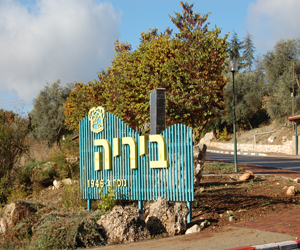Biriya
Many Reasons to Visit
Say "Biriya" to an Israeli and any number of images will flit through his mind.
Biriya is a semi-rural community -- a suburb of Tzfat. However, Biriya is also a forest, a historical landmark from the Israeli War of Independence and an area where many sites of religious significance are located.
After the fall of Jerusalem to the Romans in the early years of the first millennium, those Jews who were not exiled to Rome fled to the outlying areas of Israel, notably the North. The area around Biriya was a major center of Torah study during the Mishnaic (1st and 2nd centuries A.D.) period and many graves of well-known sages are scattered through the area. The grave of Yehonatan Ben Uziel is the best known of these - it has become popular for unmarried people to pray for a match at the gravesite of R' Ben Uziel, and stories abound of the successes of these pilgrimages. The village of Amuka, a Jewish community and center of study, is located near the R' Ben Uziel's grave - Amuka is believed to date back to Roman times, and it seems that Jews continuously inhabited this town until the Middle Ages. Rabbi Joseph Caro is believed to have written the first section of his Shulhan Aruch, or Code of Jewish Law, in Biriya.
Biriya was resettled in 1945 by a group of B'nai Akiva (youth group) members who struggled against the British in order to be given the right to set up a community there. The British evacuated the settlement several times, but the youth group members, their numbers augmented by supporters from throughout Israel, continuously evaded British roadblocks and returned to the Biriya stockade time and time again, until the British gave in. This was an enormous psychological victory for the Jewish community, and added one more nail in the British coffin as a ruler of Israel.
Modern Times
Since the establishment of the State of Israel, Biriya has been the center of much of the forestation work in the North through the work of the Jewish National Fund. Large woods were planted on the hilltops of Biriya, and it has been a favorite recreation spot for Israelis for many years.
During the Second Lebanon War of 2006, katyusha rockets which Hizbollah launched from Lebanon at Israel's northern communities wrecked havoc in the Biriya forest. The rockets caused huge fires and much of the forest was burned. Immediately after the war, the Jewish National Fund was overwhelmed with donations and volunteers dedicated to restoring the Biriya forest. The officials of the JNF set out to replant, using new technology and knowledge which had not been available when the forest was first planted. Today, in addition to the pine trees which populated the forest for many years, broadleaf trees such as different types of oaks, terebinths, birch and Judas trees have been planted, alongside fruit trees like olive, almond, berry and others. Cedar trees are another new addition to the forest, and once again, the Biriya mountain is a favorite spot for relaxing and enjoying Israel's North.

